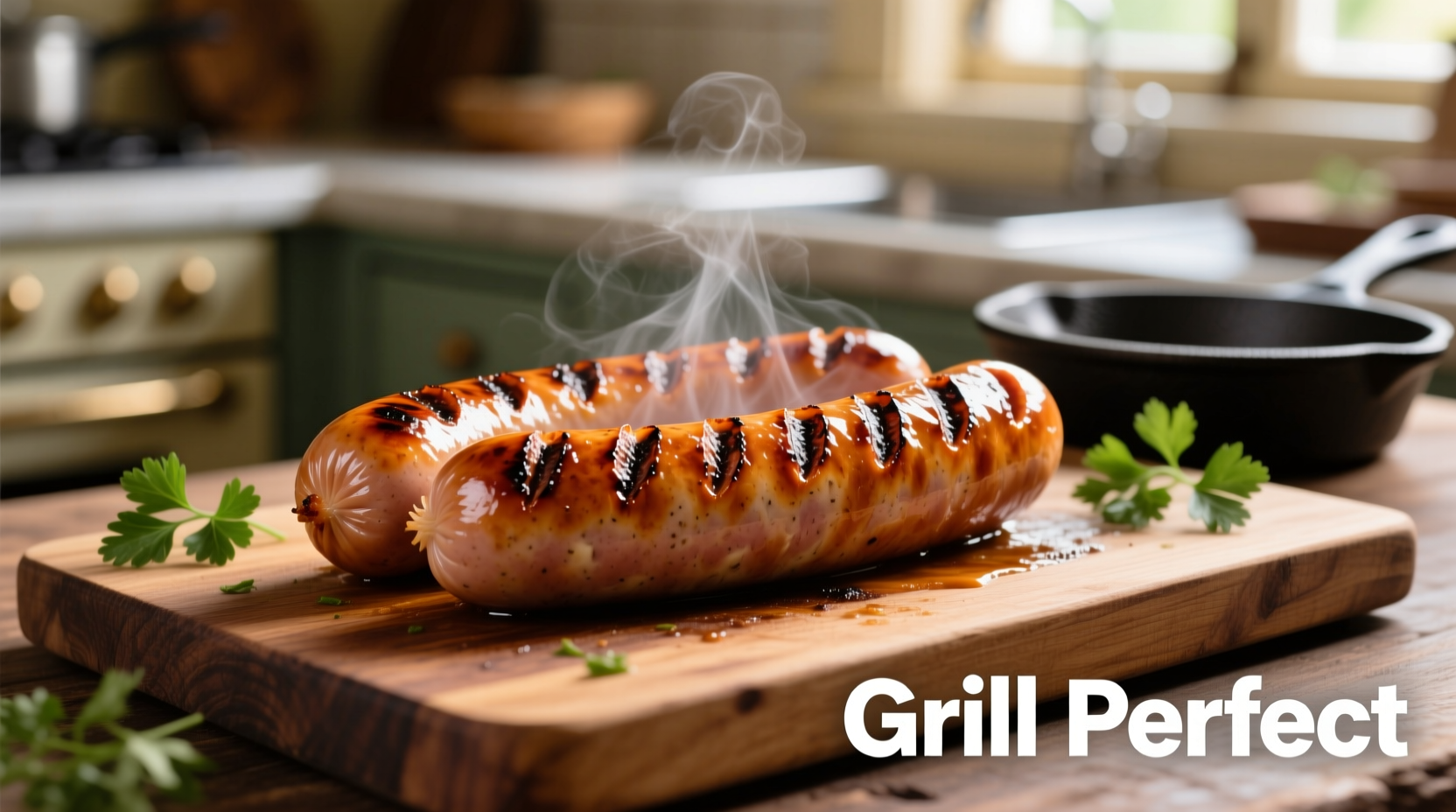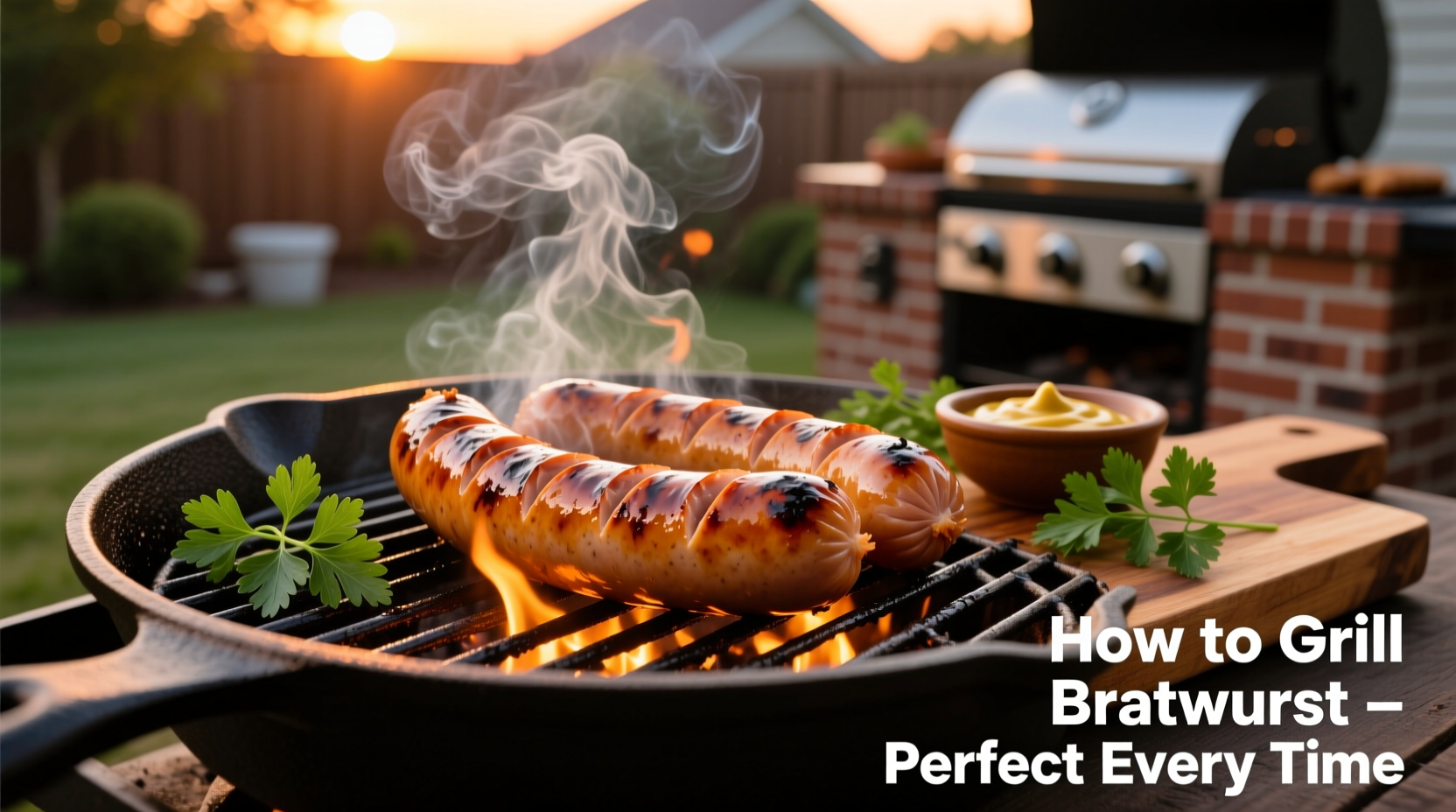Grilling bratwurst perfectly combines German culinary tradition with American backyard barbecue culture. When executed correctly, you'll achieve juicy, flavorful sausages with a beautiful caramelized exterior that bursts with savory goodness. This guide walks you through the exact process professional grill masters use to achieve consistent results every time.
Why Your Bratwurst Technique Matters
Many home cooks make critical errors that compromise bratwurst quality—boiling sausages first, using high heat that causes bursting, or skipping proper resting time. According to USDA food safety guidelines, pork products like traditional bratwurst must reach 160°F internal temperature to eliminate pathogens while preserving juiciness. The USDA Food Safety and Inspection Service confirms this temperature threshold prevents foodborne illness without drying out the meat.

Bratwurst Selection and Preparation
Start with quality ingredients for optimal results:
- Freshness check: Avoid sausages with grayish color or sour odor
- Casing integrity: Natural casings provide better snap than synthetic alternatives
- Size consistency: Uniform diameter ensures even cooking
- Pre-grill prep: Pat dry with paper towels to promote browning
| Cooking Method | Flavor Impact | Texture Result | Recommended? |
|---|---|---|---|
| Direct grilling only | ★★★★☆ (Excellent caramelization) | ★★★☆☆ (Risk of bursting) | Yes (with proper technique) |
| Boiling then grilling | ★☆☆☆☆ (Leaches flavor) | ★★☆☆☆ (Mushy texture) | No |
| Beer steaming then grilling | ★★★☆☆ (Subtle flavor infusion) | ★★★★☆ (Preserves juiciness) | Optional (for specific recipes) |
Grill Setup for Perfect Brats
Proper equipment preparation prevents common cooking disasters:
- Temperature control: Create two-zone fire (medium heat 350-375°F on cooking side, cooler area for safety)
- Grate preparation: Clean and oil grates 10 minutes before cooking
- Thermometer check: Verify digital thermometer accuracy in ice water
- Tool organization: Keep tongs, thermometer, and spray bottle accessible
Step-by-Step Grilling Process
Follow this precise cooking sequence for restaurant-quality results:
| Time | Action | Visual Cues | Internal Temp |
|---|---|---|---|
| 0-5 min | Place brats on cooler side, indirect heat | Sausages begin sweating moisture | 100-120°F |
| 5-12 min | Move to direct heat, rotate every 2 minutes | Golden brown spots developing | 120-140°F |
| 12-18 min | Continue turning, watch for flare-ups | Even caramelization, slight blistering | 140-155°F |
| 18-20 min | Remove at 155°F, rest 5 minutes | Juices run clear, firm to touch | 160°F (final) |
Avoiding Common Grilling Mistakes
Professional grillers emphasize these critical technique points:
- Never pierce excessively: One light prick per sausage prevents bursting without draining juices
- Avoid constant flipping: Turn every 2-3 minutes for proper sear development
- Resist pressing: Squashing brats releases precious fat and moisture
- Resting is mandatory: 5-minute rest allows juices to redistribute
According to culinary research from America's Test Kitchen, bratwurst cooked to 155°F and allowed to rest reaches the perfect 160°F final temperature while maintaining optimal juiciness. Their controlled experiments showed that higher temperatures consistently produced drier results.
Serving Your Perfectly Grilled Bratwurst
Complete your grilling experience with these authentic presentation tips:
- Traditional pairing: Serve in soft pretzel buns with sauerkraut and stone-ground mustard
- Cutting technique: Slice diagonally for maximum surface area to hold toppings
- Temperature maintenance: Keep cooked brats above 140°F until serving using a warming tray
- Leftover preservation: Store in airtight container for up to 3 days; reheat gently in simmering beer
Special Considerations for Different Grill Types
Adapt your technique based on equipment:
- Charcoal grills: Use the "hand test"—you should hold your hand 5 inches above grate for 5-6 seconds
- Gas grills: Preheat 10-15 minutes with lid closed to stabilize temperature
- Smoker grills: Add applewood chunks for subtle smokiness without overpowering flavor
- Indoor grills: Use cast-iron grill pan on stove with thermometer monitoring
Frequently Asked Questions
How do I prevent bratwurst from splitting on the grill?
Prick each sausage once with a fork to release steam pressure, cook over medium heat (not high), and avoid frequent flipping during the first 5 minutes. The natural casing needs time to set before vigorous turning.
Can I cook frozen bratwurst directly on the grill?
Yes, but extend cooking time by 5-7 minutes and start on indirect heat until fully thawed. Never microwave to thaw as it creates uneven texture. The USDA recommends cooking frozen meats at slightly lower temperatures to ensure even cooking.
What's the best wood flavor for grilling bratwurst?
Applewood or cherry wood provide subtle sweetness that complements pork without overpowering. Avoid strong woods like hickory or mesquite which dominate the delicate spice profile. Use wood chips sparingly—soak for 30 minutes then add small handful to charcoal.
How can I tell when bratwurst is done without a thermometer?
Squeeze test: properly cooked brats feel firm but springy. Visual check: clear juices run out when pierced (not pink). The "bend test"—when lifted with tongs, cooked brats will hold their shape without sagging. However, a digital thermometer remains the most reliable method for food safety.
Should I add beer to the grill while cooking brats?
Traditional Wisconsin-style preparation sometimes uses beer, but pouring it directly on the grill causes dangerous flare-ups. Instead, simmer brats in beer for 10 minutes before grilling for flavor infusion, or create a beer-based mop sauce applied during the last 5 minutes of cooking.











 浙公网安备
33010002000092号
浙公网安备
33010002000092号 浙B2-20120091-4
浙B2-20120091-4